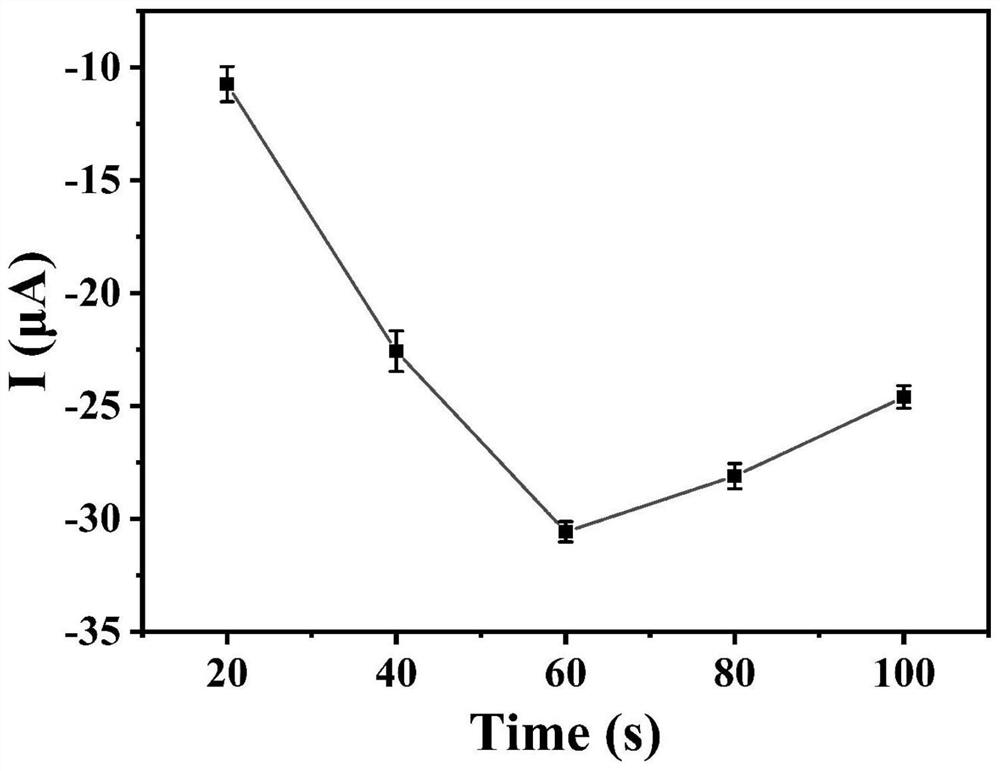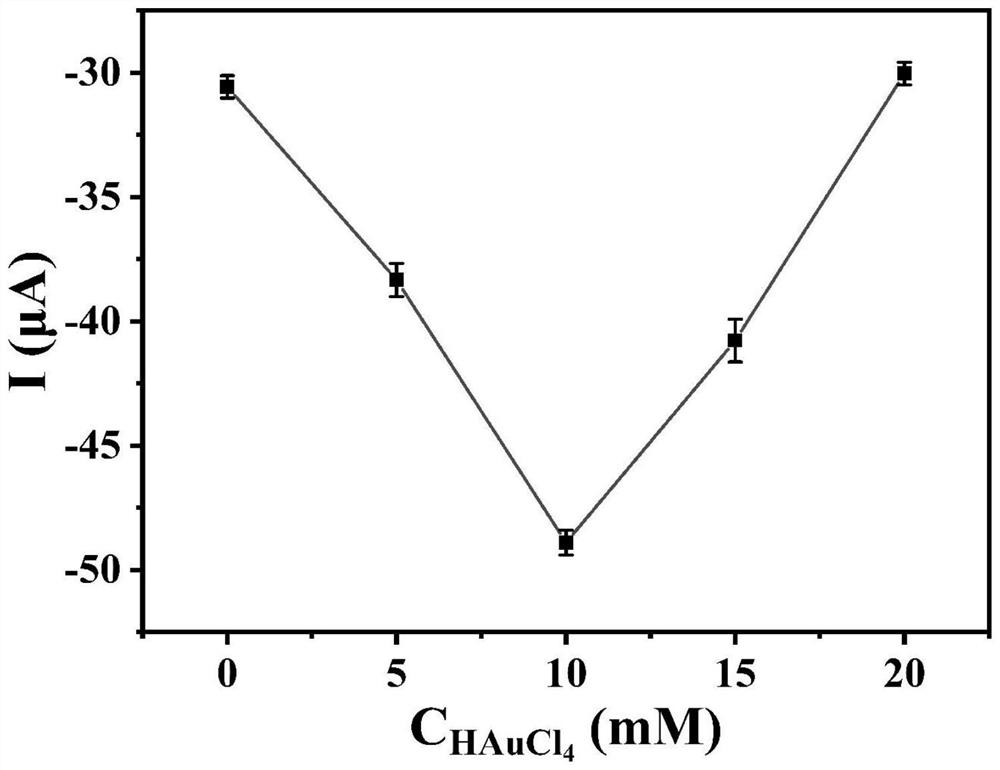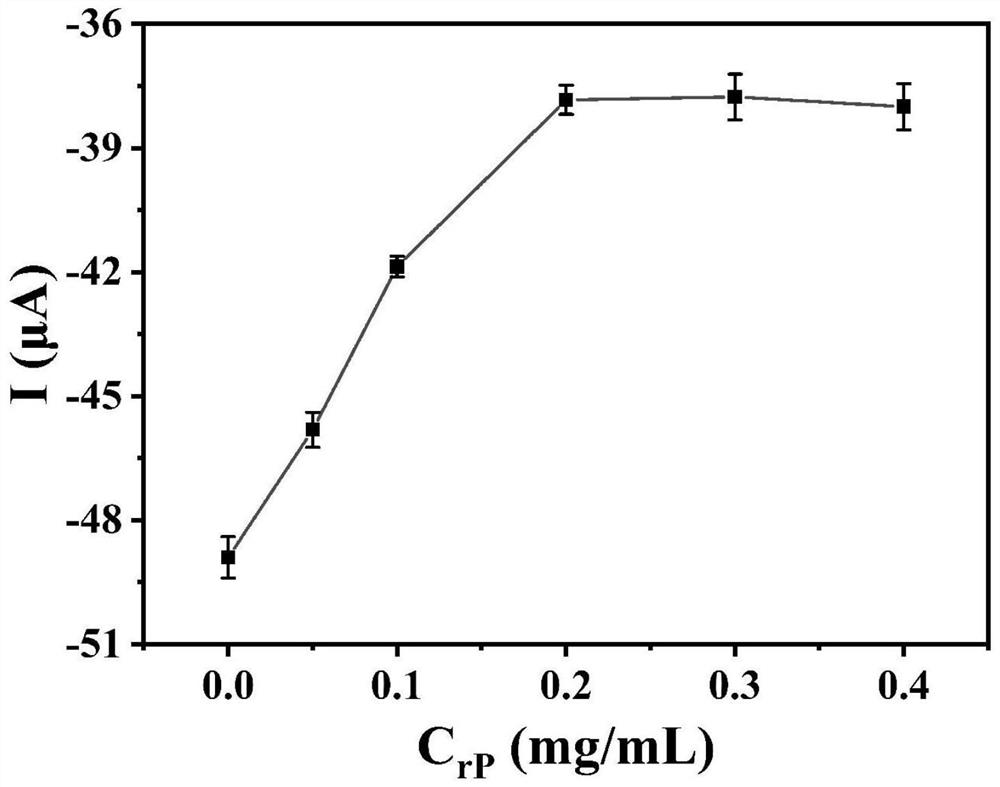Anti-interference photoelectrochemical biosensor as well as preparation method and application thereof
A biosensor and photoelectrochemical technology, applied in the field of biosensors, can solve the problems of limited detection sensitivity, large sample consumption, and time-consuming operation, and achieve the effects of convenient operation, simple detection operation, and low cost
- Summary
- Abstract
- Description
- Claims
- Application Information
AI Technical Summary
Problems solved by technology
Method used
Image
Examples
Embodiment 1
[0057] Because of CuBi 2 o 4 The photocurrent response value of the / Au photocathode has a significant impact on the detection sensitivity of the finally prepared anti-interference photoelectrochemical biosensor, so the following for CuBi 2 o 4 / Au photocathode preparation process parameters were optimized:
[0058] 1) Because of CuBi 2 o 4 The amount of deposition on the electrode can be reflected by the deposition time, so for CuBi 2 o 4 The deposition time is optimized as follows:
[0059] CuBi 2 o 4 The preparation of the nanometer film on the ITO electrode was deposited by the constant potential method, and the ethylene glycol solution was used as the electrolyte, which contained 100mM Bi(NO 3 ) 3 and 30mM Cu(NO 3 ) 2 , the deposition process is at a constant potential E=-1.8V vs Hg / Hg 2 Cl 2 , and the duration is selected as 20s, 40s, 60s, 80s, 100s respectively; then after calcination in air atmosphere at 450°C for 3h, CuBi 2 o 4 Modified electrodes.
...
Embodiment 2
[0065] Because the amount of modification of the hCG recognition polypeptide on the sensing electrode has a significant impact on the quantitative detection range of the anti-interference photoelectrochemical biosensor, the process parameters for modifying the hCG recognition polypeptide are optimized:
[0066] And because the amount of modification of the hCG recognition polypeptide on the sensing electrode can be reflected by its incubation concentration on the electrode, the incubation concentration of the hCG recognition polypeptide is optimized as follows:
[0067] By optimizing the CuBi 2 o 4 Add 20μL of hCG recognition peptide solutions with concentrations of 0.05mg / mL, 0.1mg / mL, 0.2mg / mL, 0.3mg / mL, and 0.4mg / mL to the Au photocathode dropwise, incubate in a refrigerator at 4°C for 12h, and wash with phosphate After washing the electrode with buffer solution (pH 7.4, 10 mM), the hCG recognition polypeptide modified photocathode is obtained.
[0068] It can be obtained...
experiment example 1
[0074] (1) CuBi 2 o 4The preparation steps of the nano-membrane modified electrode are as follows:
[0075] CuBi 2 o 4 The nano-membrane has a modified area of 0.25cm 2 The preparation of indium tin oxide (ITO) electrodes was deposited by a potentiostatic method, specifically using ethylene glycol solution as the electrolyte, which contained 100mM Bi(NO 3 ) 3 and 30mM Cu(NO 3 ) 2 , the deposition process is at a constant potential E=-1.8V vs Hg / Hg 2 Cl 2 , and the duration is 60s; after calcination at 450°C in air atmosphere for 3h, CuBi 2 o 4 Nanofilm modified electrodes.
[0076] Scanning Electron Microscope as attached Figure 4 Shown, CuBi 2 o 4 The nanomembrane is an internal interconnected structure composed of a large number of smooth particles with a size of 90-120nm, and has a large specific surface area, which is conducive to the subsequent in-situ growth of Au nanoparticles.
[0077] (2) CuBi 2 o 4 / Au photocathode preparation steps are as follows...
PUM
| Property | Measurement | Unit |
|---|---|---|
| Concentration | aaaaa | aaaaa |
| Size | aaaaa | aaaaa |
Abstract
Description
Claims
Application Information
 Login to View More
Login to View More - R&D
- Intellectual Property
- Life Sciences
- Materials
- Tech Scout
- Unparalleled Data Quality
- Higher Quality Content
- 60% Fewer Hallucinations
Browse by: Latest US Patents, China's latest patents, Technical Efficacy Thesaurus, Application Domain, Technology Topic, Popular Technical Reports.
© 2025 PatSnap. All rights reserved.Legal|Privacy policy|Modern Slavery Act Transparency Statement|Sitemap|About US| Contact US: help@patsnap.com



